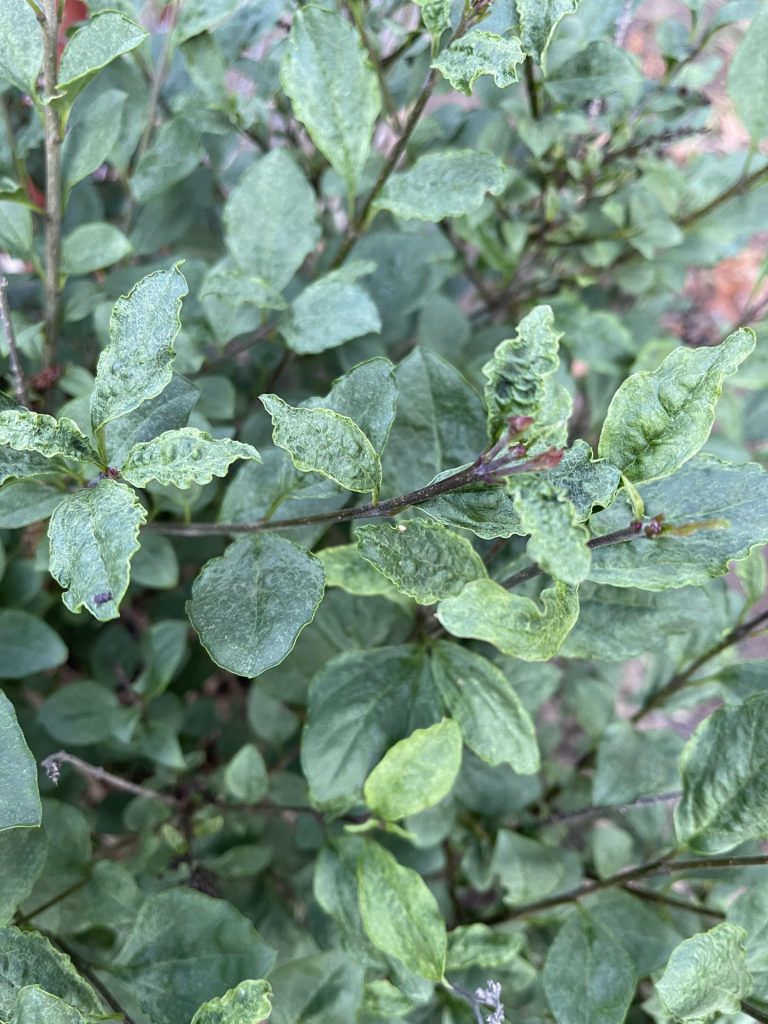
kindly see photo of lilac leaf
Thank you for contacting the Toronto Master Gardeners concerning your lilac bush.
It is difficult to tell from the photo what exactly is causing the deformity that you are observing on your lilac leaves. Have you checked the lower surface of the leaves for any pests? If you see any pests, please take a photo and email us back. If you do not see anything it could be that the young buds of your lilac suffered frost damage from that unexpected cold we had at the beginning of June. Leaves that have suffered frost damage appear blackened, see Lilac Pests
Another possibility is that your lilac is suffering from lilac bacterial blight. According to the Oregon State University article How to recognize, treat and avoid lilac bacterial blight: ” A cool, wet, rainy, spring season favors development of lilac blight, especially if rains follow a late frost or winter injury.”
This disease is caused by the bacterium Pseudomonas syringae pv. syringae. Black streaks will begin to appear on infected leaves and shoots. The dark streaks show the progression of the disease. The following information on how to control this disease is from one of our archived posts:
“Recommended course of action is to prune and burn all infected parts as soon as you notice them. Make sure to disinfest the pruning shears between cuts. A spray of copper sulfate during the early spring each year should help prevent the problem before the buds begin to break. Apply a bactericide to protect healthy shoots.
Lilac blight bacteria over-winter on diseased twigs or on healthy wood. Factors that weaken or injure plants – wounds, frost damage, soil pH, poor or improper nutrition and infection by other pathogens – predispose them to the disease.
Sources of this disease can include old cankers, healthy buds, leaf surfaces and nearby weeds and grasses. Wind, rain, insects, tools and infected nursery stock spread the bacteria.
It can be helpful to prune your lilacs to allow better air can circulation Minimize fertilization . Do not fertilize because high nitrogen favors disease development.
Lilac blight is difficult to control and it is recommended that you buy blight-resistant varieties whenever you plant new lilacs.”
Making sure that your trees and shrubs are healthy throughout the year is the best defense against pests and diseases. Below you will find basic lilac care:
- Plant in full sun – 6 hours minimum.
- Plant in a well drained site – lilacs hate to have ‘wet feet’.
- If you have clay soil, add compost, sheep manure or other well rotted organic matter on the soil surface
- Mulch around the tree/ shrub – 2-3 inches of a shredded bark/wood mulch is ideal.
- Limit watering as lilacs can take drier conditions.
- Water using a drip hose – this targets the moisture towards the roots without wetting the foliage and also helps control the spread of disease pathogens.
- Feed in early spring – 8-20-18 fertilizer.
- Prune dead, diseased, damaged and dangerous branches to a maximum of 1/3 of the plant – should be done after flowering and will help with air circulation through the plant.
- Deadhead once this years flowers are spent to encourage formation of buds for next year
I am also attaching a link to a great article on lilac disease from Penn State Extension, Lilac Diseases which you may find helpful.
June 11, 2021

